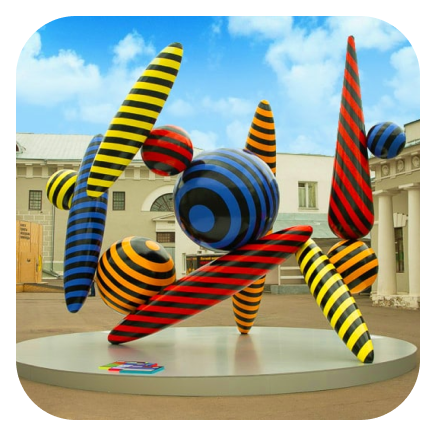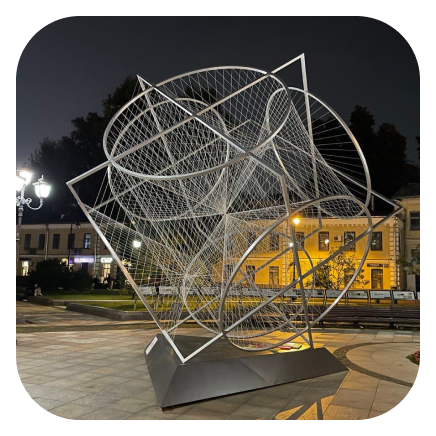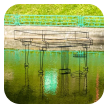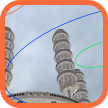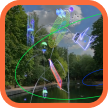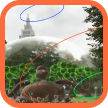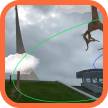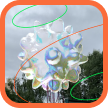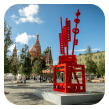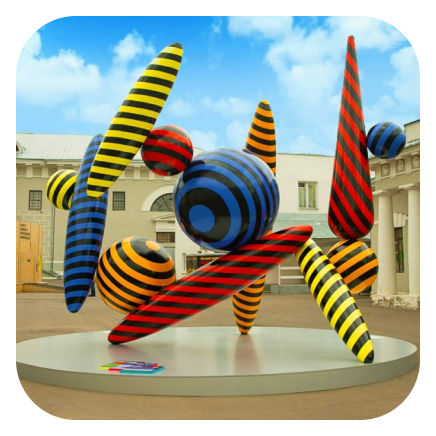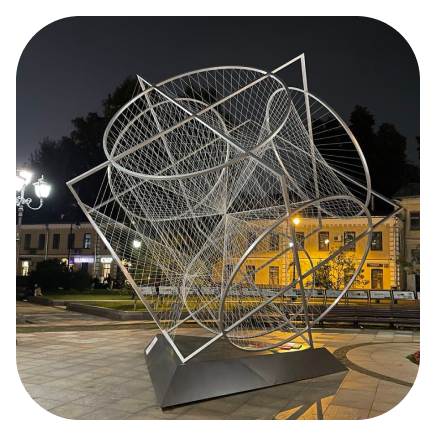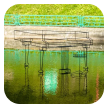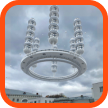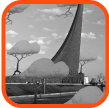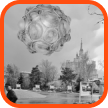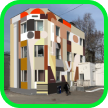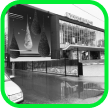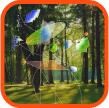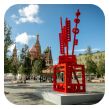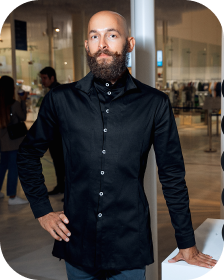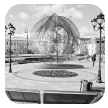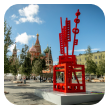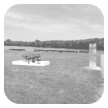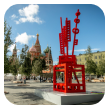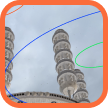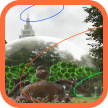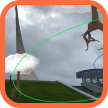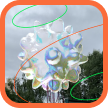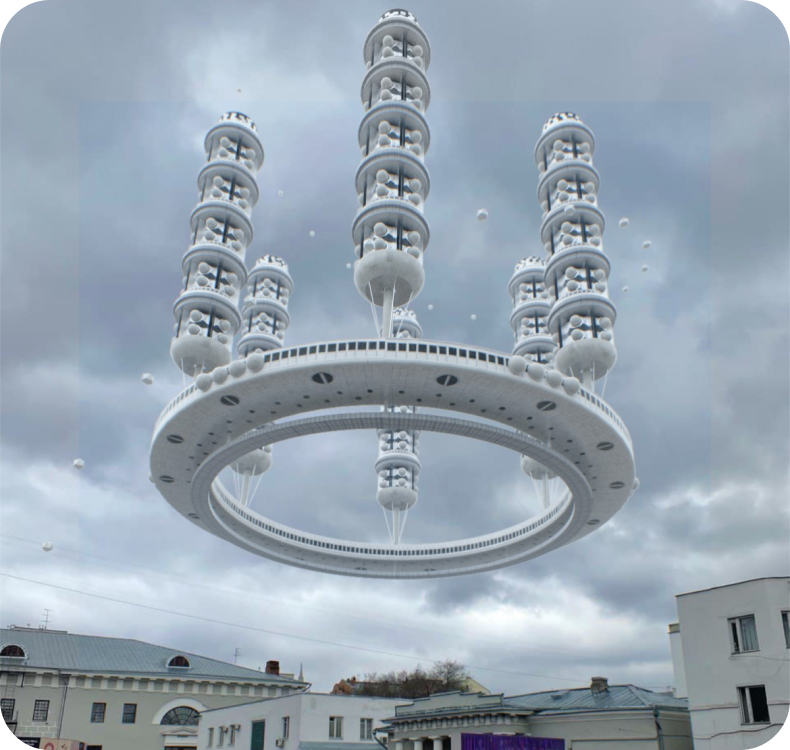
contemporary art
in the city streets
MONUMENTAL PAINTING
MEDIA ART
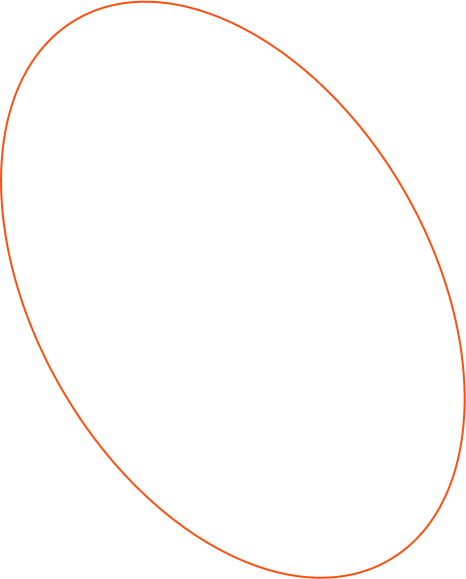




As part of the “Here and Now” project, artworks will appear in different locations around Moscow, and will be accessible to viewers via augmented reality technology. It will be possible to see digital objects in real space on the screen of a smartphone with the help of the Instagram app.
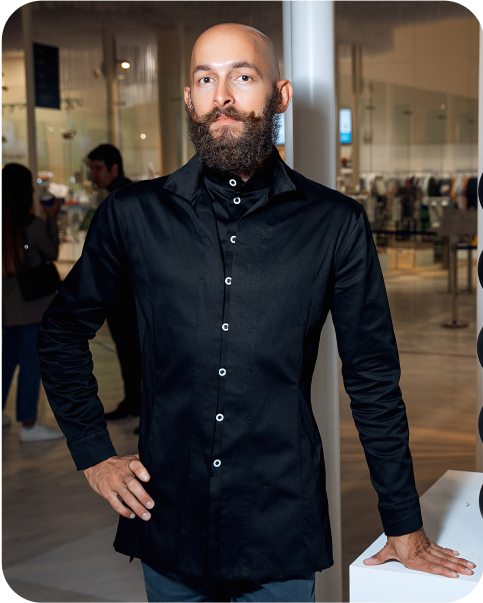
ermakov

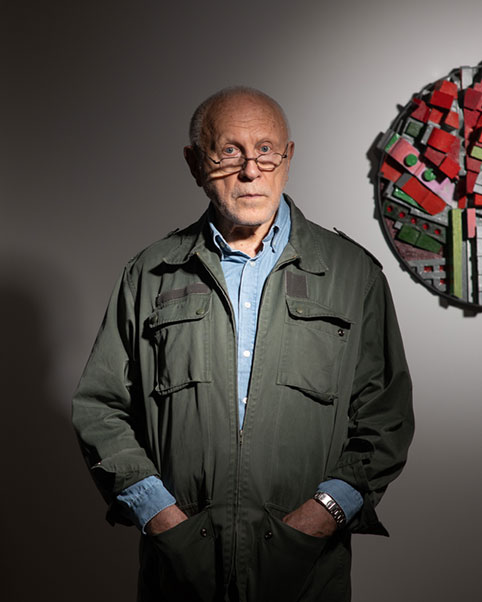
CHELKOVSKI

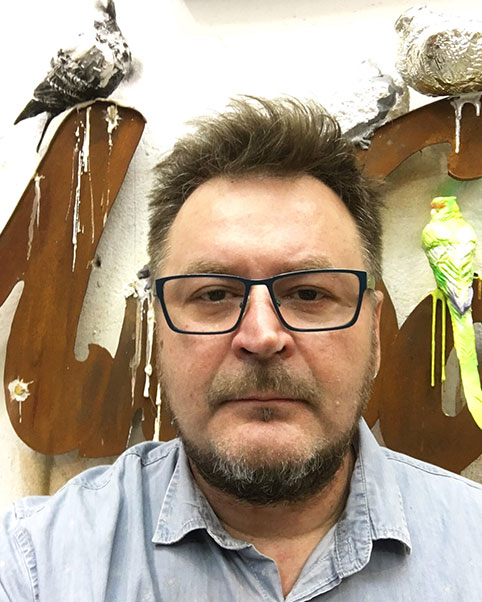

a “classic artist” but, unlike the great sculptors of the past, in his work he uses light and impermanent modern materials.
In 2004 Shekhovstov represented Russia at the biennial in São Paulo, and in 2009 he was one of the exhibiting artists at the Russian pavilion at the Venice Biennale. Personal exhibitions of his work have been held at the Perm Museum of Contemporary Art (2011) and the Tretyakov Gallery (2014).
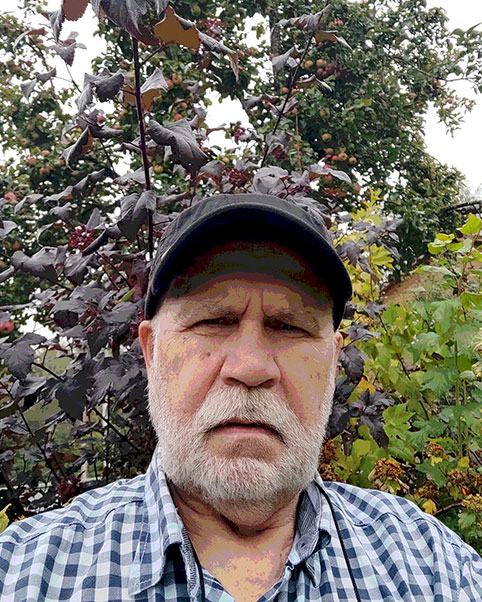

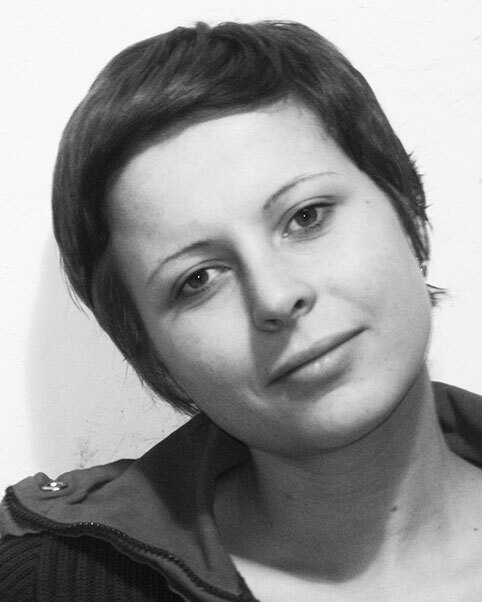
Zholud

of the “Innovation” State Prize for contemporary art, today Zholud works both in the installation genre that made her famous and as a graphic artist. She is also interested in the organisation of space, the changes in the environment around it, and its influence on that environment. Works by Zholud can be found in the collections of the Moscow Museum of Modern Art, the Hermitage, the Russian Museum, the Tretyakov Gallery and other museums.
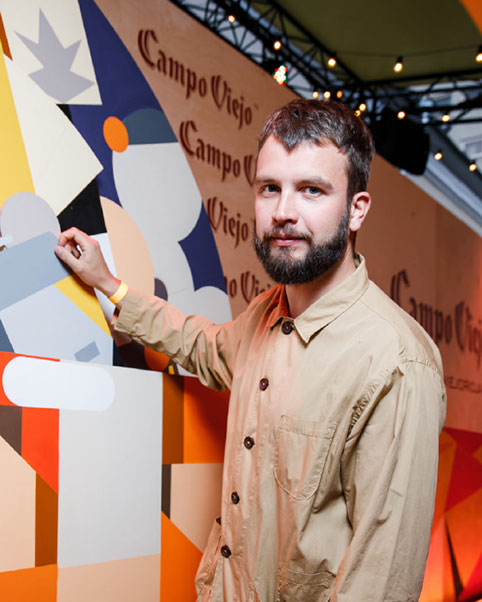
LUKA

He creates enormous street works, objectless collages, and assemblages
of wood and found objects. His works
are distinguished by their distinctive colour scheme, with warm tones and characteristic forms. Luka’s work has been shown at exhibitions in Russia, the Netherlands, France, Spain and the U.S.
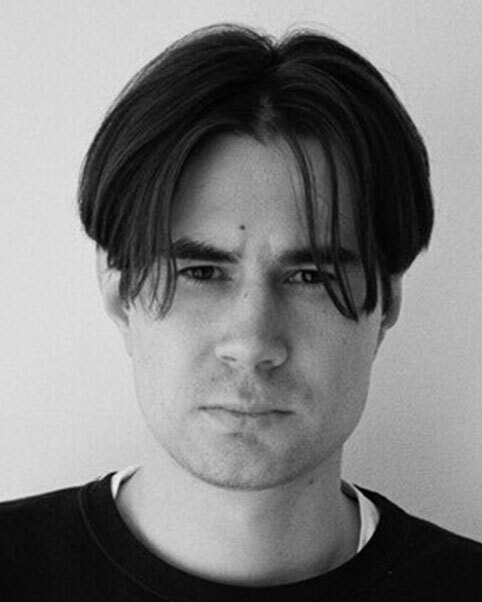
ASHASTIN

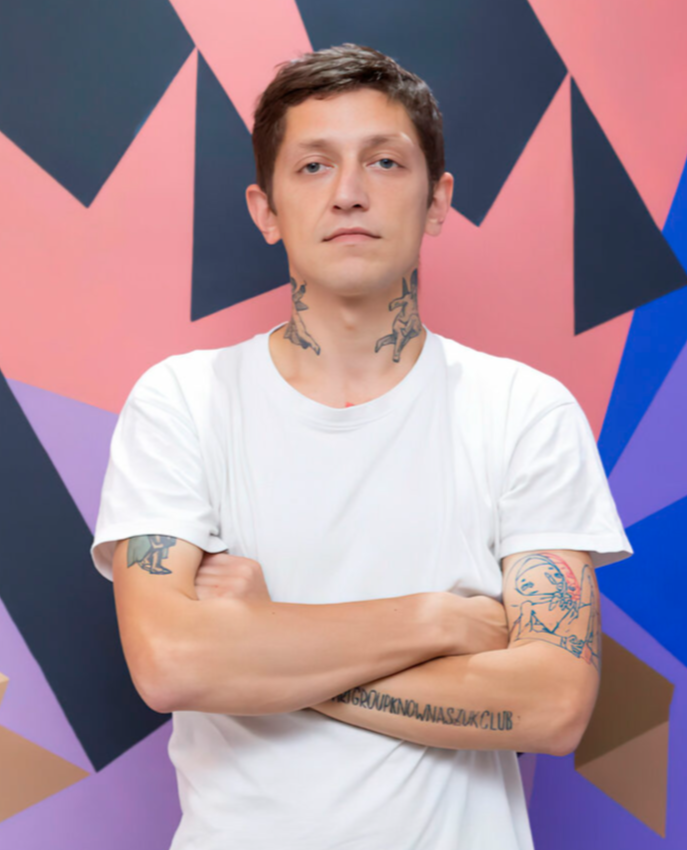
Stefanov

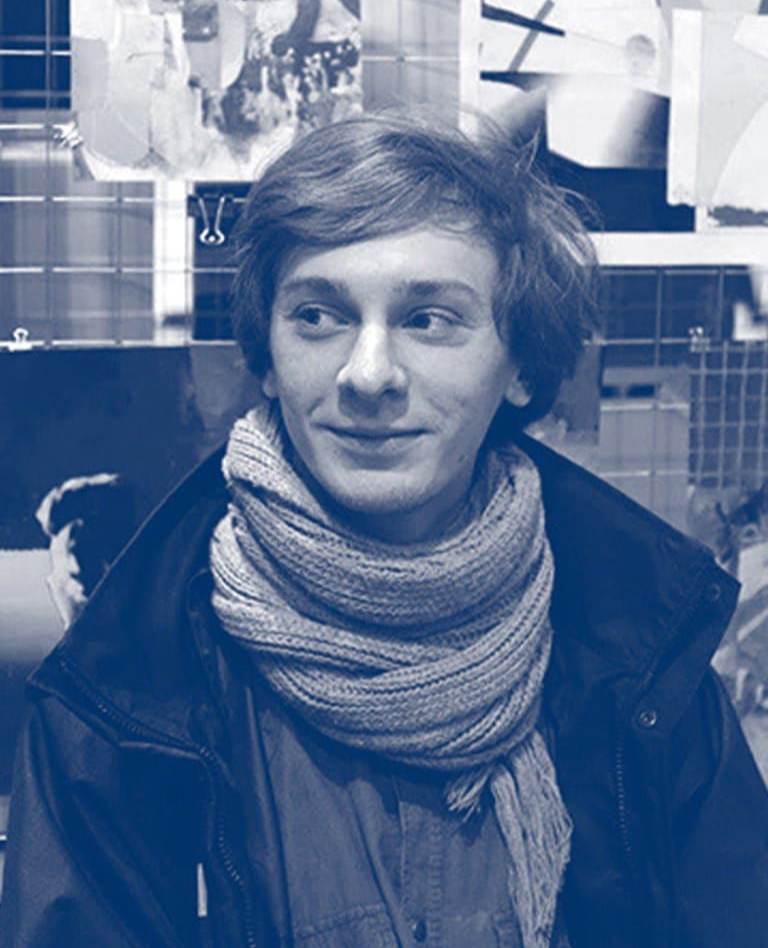
NINETY

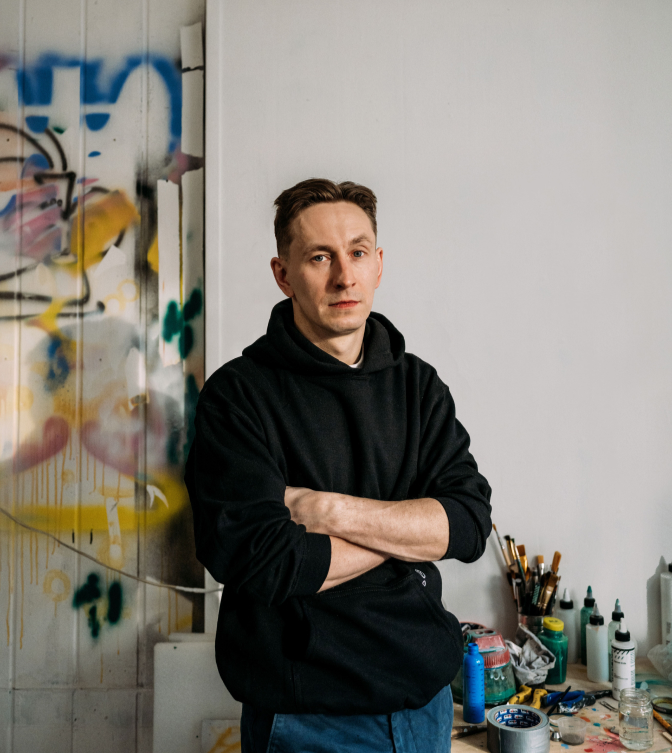
NOOTK

transformation into a contemporary reclaimed factory district.
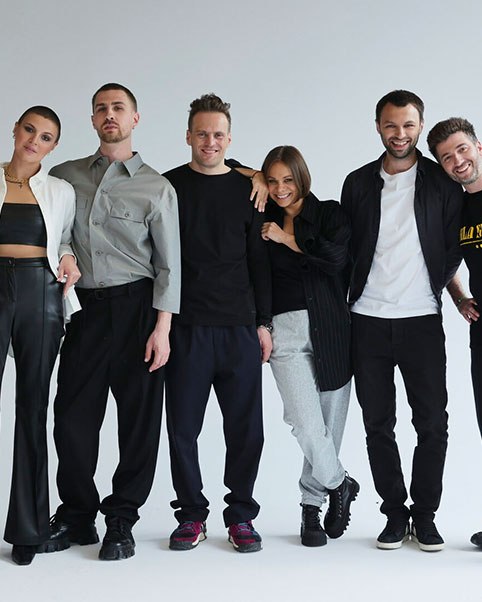
SVETA

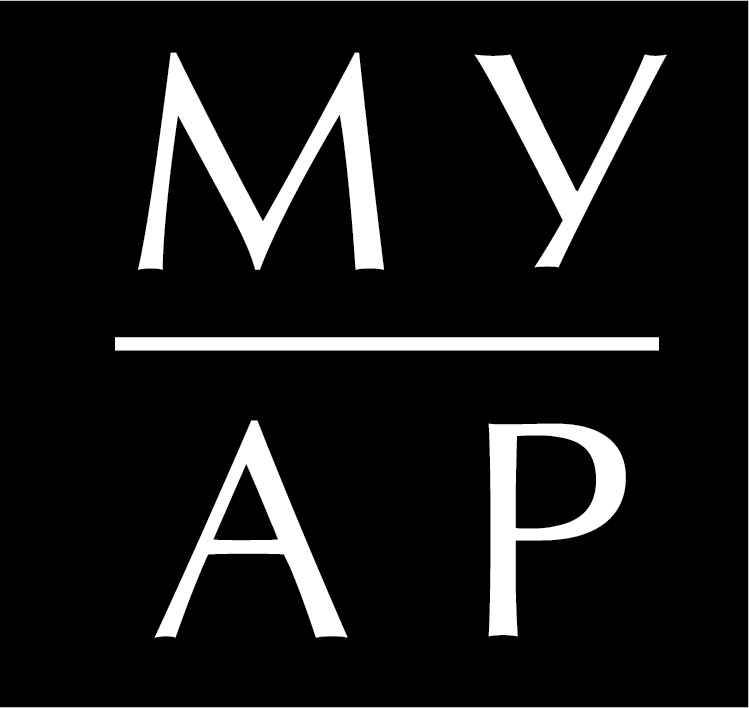


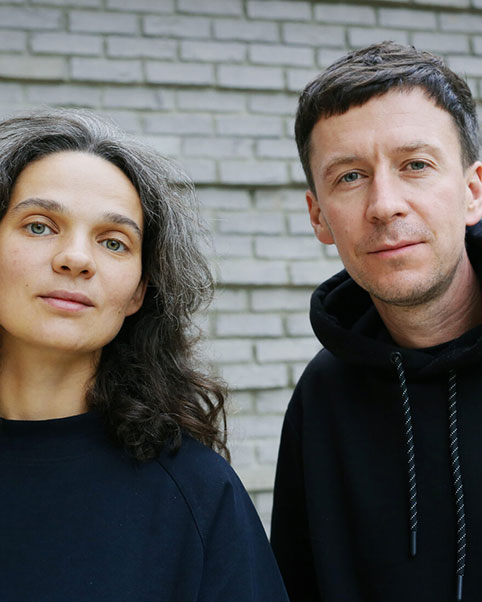

The hypothesis of the possible existence of these properties broadens our understanding of the wind as a complex entity, and also makes it possible to see previously unnoticed relationships in nature.
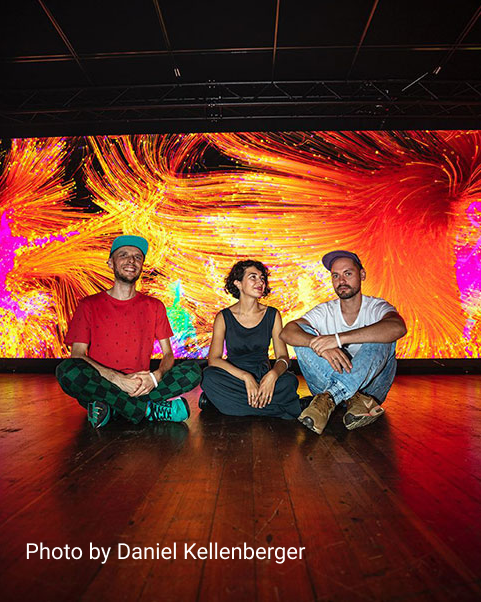

was Microsoft. In 2017 a permanent exhibition of work by the studio opened at the Sveta Abrau Gallery in Abrau-Dyurso on Russia’s Black Sea coast. In 2018 four projects by Kuflex were chosen for New Media Installation, a digest of the best digital art. The studio’s work has been exhibited in Russia, the U.S., China, Europe, the Philippines, and other countries.
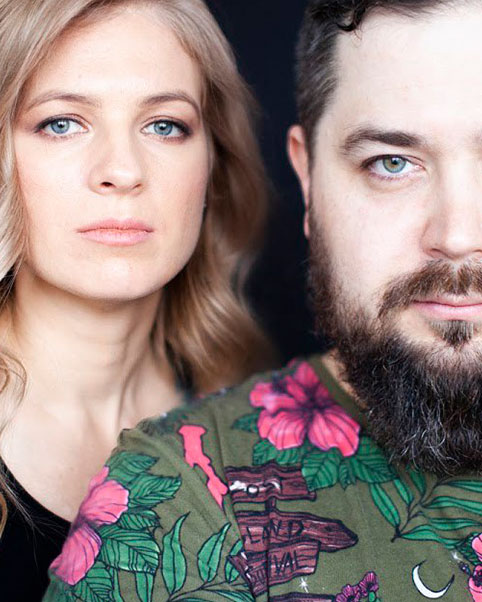

Объекты Романа Ермакова часто контрастируют с окружающей средой благодаря яркой расцветке и экспрессивной форме. В своих работах автор пытается зафиксировать энергию разных пластичных форм, создать иллюзию движения и внутреннего напряжения композиции. Скульптура, представленная на Манежной площади, изображает фантазийное существо из другого измерения. Попадая в наш трёхмерный мир, под влиянием законов физики оно превращается в замысловатый арт-объект. Зрителю предлагается поверить в существование неизвестного мира и самостоятельно интерпретировать работу художника.
Место размещения: Манежная площадь
Roman Ermakov has been creating public art objects and kinetic costumes for more than 10 years. The artist rose to world fame in 2009 with his avant-garde collection "Living Sculptures". His first personal exhibition "The Dancing Axis of the Fifth Dimension" opened in 2019 and was devoted to urban sculpture. In 2020 Ermakov teamed up with a group of students to develop the six-metre installation "Yula" for the Tavrid art park, and in 2021 his "Stable Composition" became part of an exhibition of public art on Red Square.
With their bright colour scheme and expressive form, Roman Ermakov’s objects often form a contrast with the surrounding environment. The artist attempts in his work to capture the energy of different plastic forms, to create an illusion of motion and the inner tension of a composition. The sculpture presented in the courtyard of the Museum of Moscow depicts a fantastical entity from another dimension. Entering our three-dimensional world, it becomes subject to the laws of physics and transforms into an intricate art object. The viewer is invited to believe in the existence of an unknown world and interpret the artist’s work in their own way.
➤ Location: Museum of Moscow
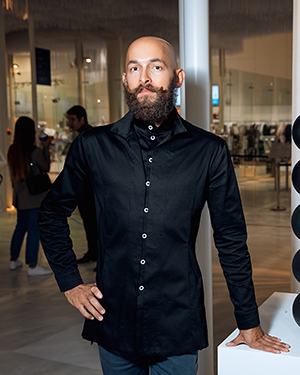
Сергей Шеховцов называет себя «абсолютно классическим художником», но, в отличие от великих скульпторов прошлого, в своих работах использует лёгкие и недолговечные современные материалы: поролон, пенопласт, пластик. В 2004 году Шеховцов представлял Россию на биеннале в Сан-Паулу, в 2009 стал одним из экспонентов Русского павильона на Венецианской биеннале, персональные выставки художника прошли в Пермском музее современного искусства PERMM (2011) и в Третьяковской галерее (2014).
Место размещения: ГБУК г. Москвы «Музей-усадьба «Кусково» (вход платный)
Sergei Shekhovstov describes himself as a “classic artist” but, unlike the great sculptors of the past, in his work he uses light and impermanent modern materials. In 2004 Shekhovstov represented Russia at the biennial in São Paulo, and in 2009 he was one of the exhibiting artists at the Russian pavilion at the Venice Biennale. Personal exhibitions of his work have been held at the Perm Museum of Contemporary Art (2011) and the Tretyakov Gallery (2014).
Sergei Shekhovtsov became famous for his ability to work with the symbols and signs around us, beginning with architectural and sculptural monuments and ending with variegated images harvested from contemporary media. This new work sees the artist transform a well-known cinematic and artistic subject in his characteristically ironic style. In this elegant statement, he recalls the famous Soviet film of the same name and calls upon us not to forget the most important feeling in life. The result is a vivid image of contemporary culture, worthy of thoughtful contemplation as well as a quick selfie for Instagram.
➤ Location: Kuskovo Museum Estate (there is a charge for entry)
GRIGORYEV

Известный российский художник Александр Григорьев более сорока лет работает в области геометрической абстракции, создает кинетические объекты и занимается театральной пластикой. Объект «Размышление куба о круге» представляет собой конструктивный куб с вписанными в него шестью окружностями и сложной паутиной шнуров-нитей. Проект выполнен в духе масштабных кинетических работ художника прошлых лет. Он выявляет пространственные особенности исторической застройки, позволяя по-новому ощутить ландшафт Хитровской площади.
Место размещения: Хитровская площадь
1950—1970-е» Музея современного искусства «Гараж». В 2020 году произведение художника «Квадрат в кубе» было показано на выставке «Лаборатория Будущего. Кинетическое искусство в России» в санкт-петербургском выставочном зале «Манеж».
The renowned Russian artist Alexander Grigoryev, who has been working with geometric abstractions for more than 40 years, creates kinetic objects and theatrical scenery. The object “A Cube Ponders a Circle” is a central cube surrounded by six circles, formed from a complex lattice of cords. Created in the spirit of the large-scale kinetic objects the artist has produced in previous years, the artwork reveals the spatial features of historical buildings, allowing us to experience the landscape of Khitrovskaya Square in a new way.
➤ Location: Khitrovskaya Square

2000-х. Работы Шелковского находятся в коллекциях Центра Жоржа Помпиду в Париже, Музея Фонда Людвига в Вене, Третьяковской галереи, Русского музея.
Место размещения: ГАУК г. Москвы «Парк «Зарядье»
Igor Chelkovski’s style took shape in the 1970s, when he began to create wooden sculptures and three-dimensional compositions reminiscent of Constructivist experiments. By comparison, “Vase with Flowers” is simpler and more expressive. This slender, lineal work is a schematic depiction of flowers, rendered in steel. Chelkovski’s bright, sharp composition recalls the Architectons of Kazimir Malevich, three-dimensional Suprematist models that were built from the simplest geometric elements. Chelkovski was also inspired by natural forms, which has allowed him to convey lightness and harmony. These “bouquets” are Chelkovsky’s trademark. His works were the first public art pieces to be acquired by the Tretyakov Gallery for its collection. Igor Chelkovski was awarded the first Moscow Art Prize for his sculptural series “People” in 2020.
➤ Location: Zaryadye Park
Аня Жёлудь «избавляет предметы от обманчивых поверхностей». Основной материал, с которым она работает, — каркасные металлические конструкции, позволяющие добиться эффекта графической линии. Созданные художницей объекты воспроизводят различные бытовые ситуации, повторяя силуэты предметов мебели и быта. Так, рояль, сведённый к металлическому контуру, выглядит как рисунок в трёхмерном пространстве. Минималистичность этой скульптуры заставляет задуматься о сути вещей, которые нас окружают.
Место размещения: Музей-заповедник «Коломенское»
Anya Zholud "rids objects of deceptive surfaces." The base material with which she works is metal frames, allowing her structures to achieve the effect of a graphic line. The objects Zholud creates reproduce various everyday situations, repeating the silhouettes of furniture and household items. In this way, the grand piano, reduced to a metallic contour, looks like a three-dimensional drawing. The minimalism of this sculpture encourages us to consider the essence of the things that surround us.
➤ Location: Kolomenskoye Museum Reserve
Место размещения: ГБУК г. Москвы «Музейное объединение «Музей Москвы»
➤ Location: Museum of Moscow
Место размещения: ГБУК г. Москвы «Культурный центр «Салют»
➤ Location: Salut Cultural Centre
Место размещения: ГБУК г. Москвы «Культурный центр «Салют»
➤ Location: Moscow Oil Refinery School, Kapotnya, 24 3rd block
Место размещения: ГБУК г. Москвы «Культурный центр «Салют»
➤Location: Rassvet Factory, 3/2 Stolyarny Lane
Место размещения: ГБУК г. Москвы «Культурный центр «Салют»
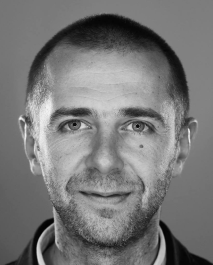

transformation into a contemporary reclaimed factory district.
➤Location: Danilovskaya Manufactura, Varshavskoe shosse 9 s 1
SVETA
«Летающий город / точка зрения»
В 1928 году ученик архитектора Николая Ладовского — визионер Георгий Крутиков защитил свой знаменитый дипломный проект «Город будущего». Для сохранения нашей планеты он предложил радикальное решение — перенести жилые дома в воздушное пространство, а на земной поверхности оставить только зоны для работы и отдыха. Продумал и специальные транспортные средства — летающие жилые капсулы. Именно этот проект стал вдохновением для команды «Сила света». Художники постарались максимально сохранить изначальную концепцию и с уважением к оригиналу переосмыслили конструкцию и фактуру города. Студия перенесла карандашные чертежи в трёхмерный мир дополненной реальности, используя свой опыт работы со светом и пространством. Проект реализован на основе дипломного проекта Г. Т. Крутикова «Город будущего» (эволюция архитектурных принципов в планировке городов и организации жилища. Развитый жилой комплекс «Трудовая коммуна», 1928 г.) из фондов Федерального государственного бюджетного учреждения культуры «Государственный научно-исследовательский музей архитектуры им. А. В. Щусева».
Место размещения: ГБУК г. Москвы «Музейное объединение «Музей Москвы»

In 1928 the visionary Georgy Krutikov, a student of the architect Nikolai Ladovsky, defended his famous graduation project City of the Future. He proposed a radical solution for the preservation of our planet: moving residential buildings into the air, leaving only work and recreation zones on the surface of the Earth. He also devised special living capsules that could fly. It was this project that inspired the Sila Sveta ("Power of Light") team to create "Flying City / Point of View". The artists tried to preserve as much of the original concept as possible and, with respect for the original, reinterpreted the construction and texture of the city. Using their knowledge of light and space, the studio’s artists have brought the pencil drawings into the 3D world of augmented reality.
The project is based on Georgy Krutikov’s graduation project "City of the Future (the Evolution of Architectural Principles in City Planning and the Organisation of Housing): The ‘Labour Commune' Residential Complex" (1928), Shchusev State Museum of Architecture.
➤ Location: Museum of Moscow

«Интеграл ветра» — фантазийный объект, который выводит изучение свойств природы на новый уровень, неподвластный логике современной науки. Идея понять и просчитать ветер с помощью этого необычного устройства стала для его создателей аллегорией бесконечности человеческого познания. «Интеграл ветра» со множеством подвижных частей создан не только для высчитывания известных характеристик ветра, но и для изучения необнаруженных и несвойственных ему параметров, например: гиперсвязности, полиформности, сверхрезистентности или имманентности. Предположение о возможном существовании этих свойств расширяет наши представления о ветре как о сложной сущности, а также даёт возможность увидеть ранее незамеченные в природе взаимосвязи.
Место размещения: ГАУК г. Москвы ЦПКиО им. М. Горького, Нескучный Сад
“Wind Integrals”
“Wind Integrals” is a fantasy object that brings the study of the properties of nature to a new level that is not subject to the logic of modern science. For its creators, the idea of understanding and calculating the wind with the help of this unusual device became an allegory of the infinity of human knowledge. With its numerous moving parts, “Wind Integrals” has been created not only to calculate the known characteristics of the wind, but also for the study of undetected and uncharacteristic parameters: hyper-connectivity, polyformity, super-resistance or immanence. The hypothesis of the possible existence of these properties broadens our understanding of the wind as a complex entity, and also makes it possible to see previously unnoticed relationships in nature.
➤ Location: Neskuchny Garden, Gorky Park

Современный мир — мир генной инженерии, где учёные могут преобразовывать живые организмы: убирать лишнее и добавлять новое. Вероятно, через несколько десятилетий в парках и лесах будут расти усовершенствованные деревья и цветы — растения, способные светиться в темноте или менять окрас в реальном времени. Российская студия интерактивного цифрового искусства Kuflex решила не ждать, а своими силами визуализировать флору будущего. Созданный ими «Квантовый овощ», временно пустивший виртуальные корни в саду «Эрмитаж», способен в реальном времени менять цветовую палитру, а также преобразовывать внешние шумы и человеческий голос. Каждая встреча с этим растением будет уникальной.
Место размещения: ГАУК г. Москвы Московский городской сад «Эрмитаж»
The modern world is a world of genetic engineering in which scientists can transform living organisms by removing what is unnecessary and adding something new. It’s likely that in several decades enhanced trees and flowers will be growing in the parks and forests — plants that are able to glow in the dark or change colour in real time. However, the Russian interactive digital art studio Kuflex decided not to wait, but to visualise the flora of the future on their own. The “Quantum Vegetable” they created, which has temporarily put down its roots in the Hermitage Garden, is able to change its colours and convert external noises and the human voice into sound sketches in real time. Every meeting with this plant will be unique.
➤ Location: Hermitage Garden

Для «Мастерской 15» территория Музея космонавтики — повод вступить в диалог с пространством, напрямую связанным с освоением космоса. В официальной космической программе главной фигурой советской мифологии был Юрий Гагарин. В мультимедийной работе на первом месте персонажи вымышленные — виртуальные деревья-облака, которые в огромном количестве разрослись вокруг монумента «Покорителям космоса». Их существование превращает территорию музея в поднебесье — пересадочный узел, где от ракет отделяются ступени и формируются облака. В любую минуту деревья могут оторваться от поверхности и воспарить ввысь.
Место размещения: ГБУК г. Москвы «Мемориальный музей космонавтики»
For Workshop 15, the grounds of the Museum of Cosmonautics were a prompt to enter a dialogue with a space directly linked to the conquest of the cosmos. In the official Soviet space programme, Yuri Gagarin was the central mythological figure. In this multimedia work, however, that role goes to invented characters: virtual cloud-trees, which have grown up in vast number around the monument to the “Conquerors of Space”. In this way, the grounds of the museum transform into a celestial transfer hub, where steps descend from rockets and clouds form. At any minute the trees could tear themselves away from the surface and soar upwards.
➤ Location: Memorial Museum of Cosmonautics
3D-печать и другие новые технологии. В своих проектах он анализирует информационные потоки и переосмысляет зависимость человека от них, создает концепции гаджетов и новых сервисов, связанных с развитием соцсетей, генной инженерии и других технологий.

«Жук-электропряд»
Аристарх Чернышев — пионер мультимедийного искусства в России. Большую часть времени он посвящает творческому переосмыслению чрезмерного потребления, зависимости человека от цифровых технологий и проблемам экологии. В новой работе Чернышев заглядывает в будущее и создаёт жука-электропряда — замысловатый синтетический организм, главная функция которого заключается в получении «зелёной» энергии без сжигания ископаемого топлива и других природных ресурсов. Электричество внутри него вырабатывается из отходов сельскохозяйственного производства и аккумулируется в специальном хранилище, откуда потом поступает конечному потребителю.
Место размещения: ГАУК г. Москвы «Московский зоопарк» (вход в зоопарк платный)
Aristarkh Chernyshev is a pioneer of multimedia interactive art in Russia. He devotes most of his time to the creative reinterpretation of excessive consumption, man’s dependence on digital technologies, and the problems of the environment. In his new work Chernyshev looks into the future and creates an electric beetle, a synthetic organism whose chief function is obtaining "green" energy without burning fossil fuels and other natural resources. The electricity inside it is generated from agricultural waste and accumulates in a special reserve, from where it is then supplied to the end user.
➤ Location: Moscow Zoo (there is a charge for entry)

of its former employees, collected in the format of a mass-circulation newspaper, help to preserve and bring the history of this place to life again. The factory newspaper was a common feature of Soviet life, as was the practice of displaying newspapers at public news stands. Structures like this that provide information can change the status of the surrounding space, making it public, and creating discussion right on the spot.
The artistic editor of the “People and Polymers” newspaper is Kirill Glushchenko, the founder and sole employee of the publishing house Glushchenkoizdat, which is devoted to the study and reinterpretation of Soviet print design.
Curator: Nadya Degtyareva
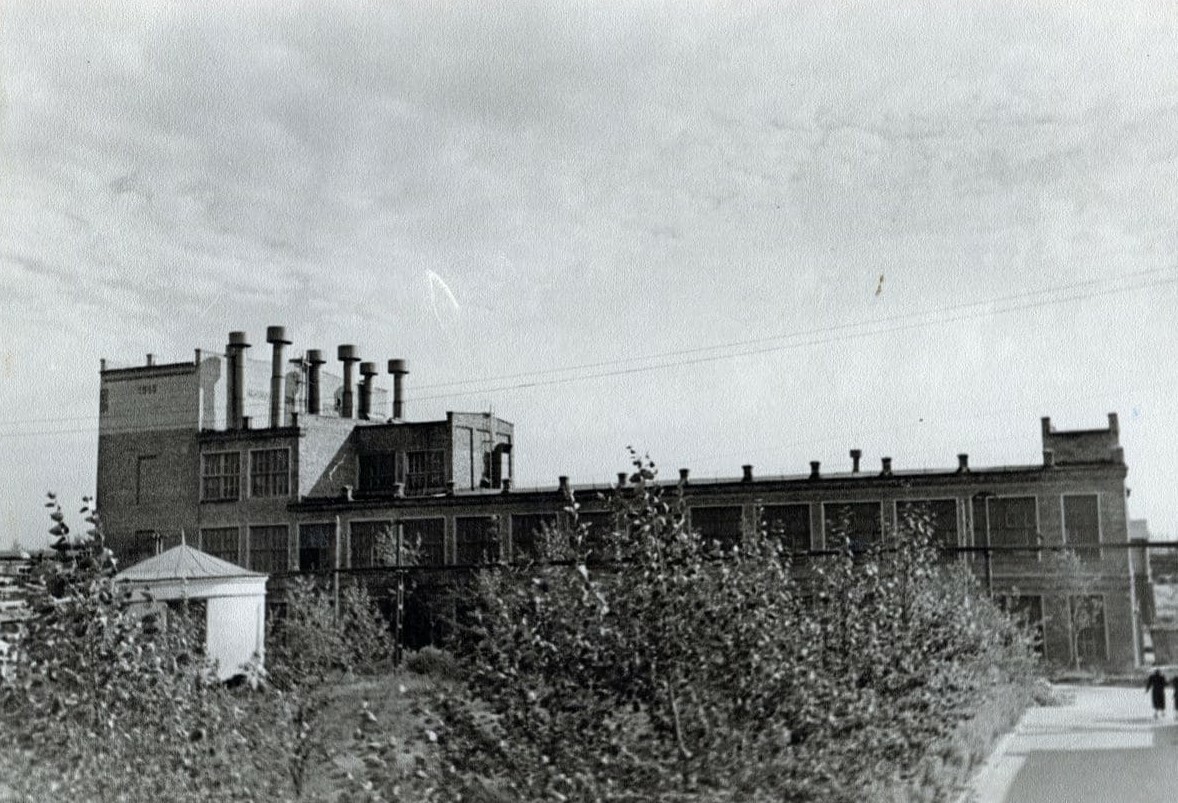
Photo from the archive of Irina Protsko


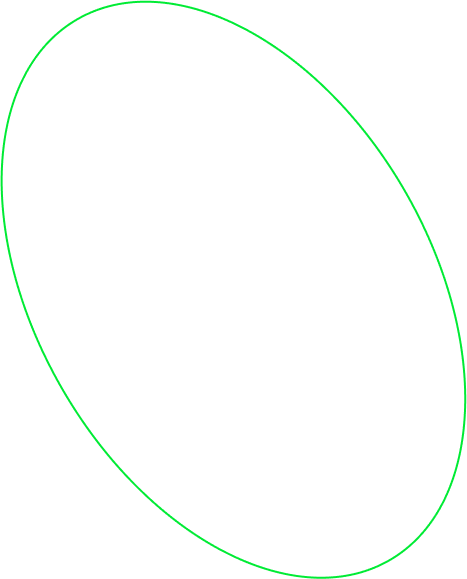

at the city streets
PALAZHCHENKO

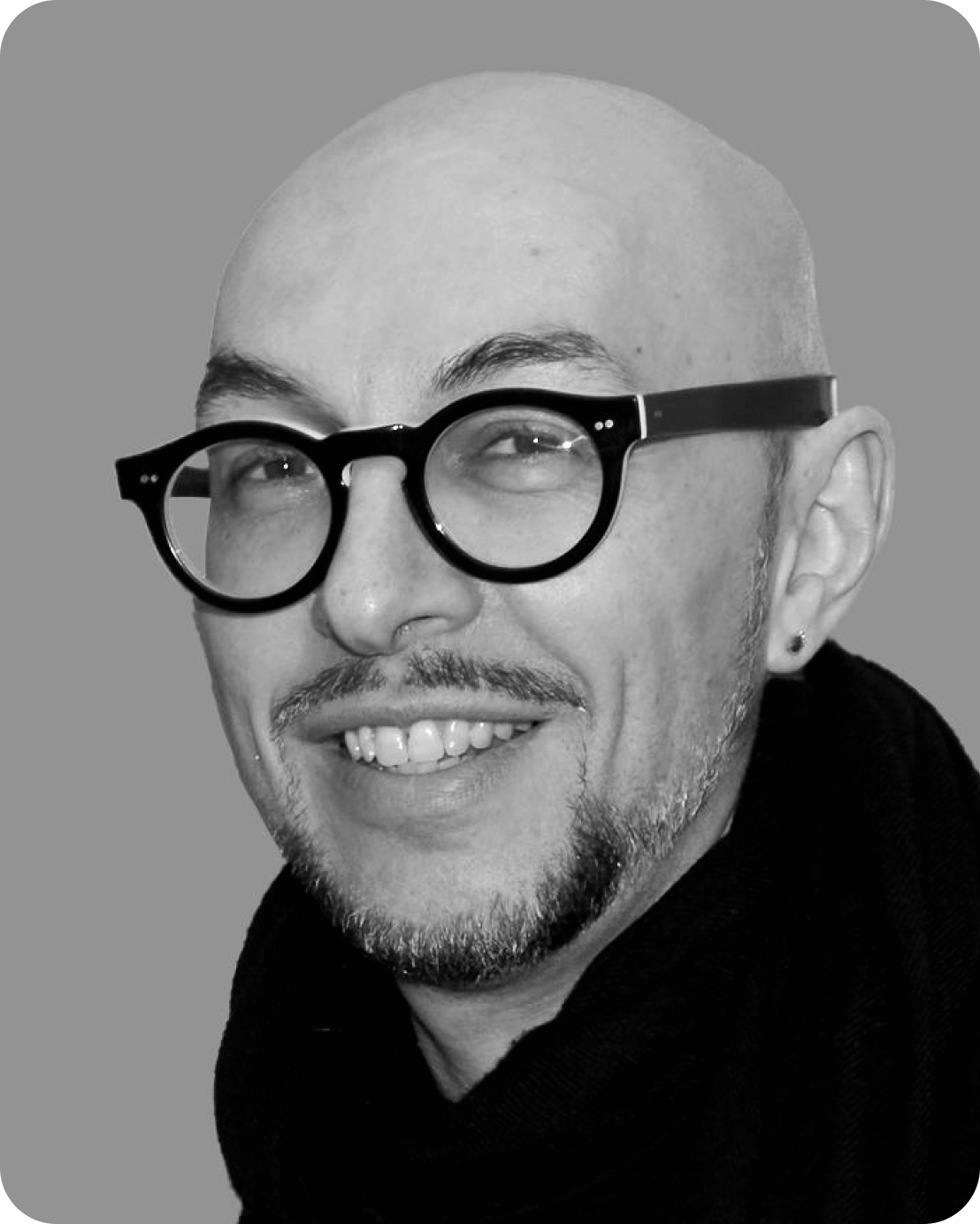
ASTAKHOV



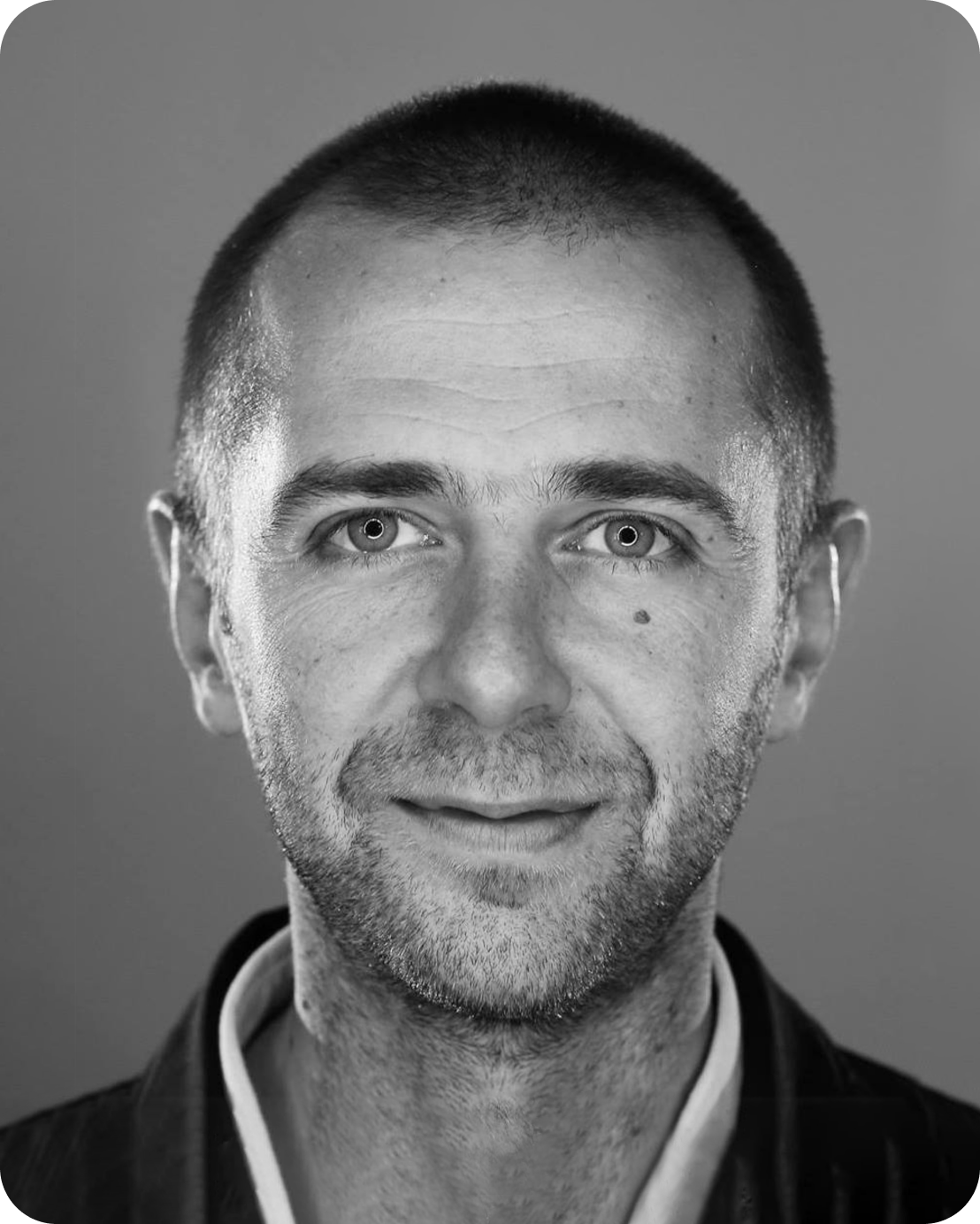
ALI-ZADE


in the city streets






Department of Culture of the City of Moscow
Moscow City Museum
Exhibition Halls of Moscow Association
Artproject Agency for the Organisation
and Holding of Events in the Cultural Field



